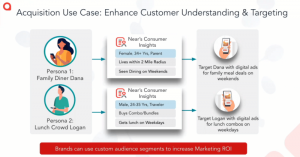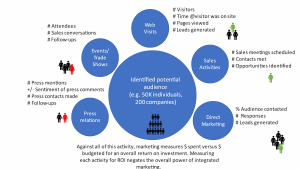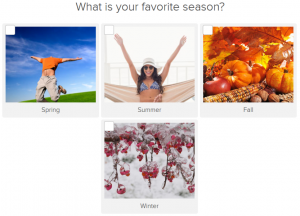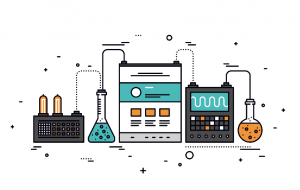The email newsletter has been around since the dawning of the World Wide Web. Now, there are digital publications, newsletters and aggregation services to speak to a variety of audiences, topics and interests.
But do newsletters have a place in companies’ content arsenals? In my opinion, the digital newsletter has evolved into a new, more exciting medium. When crafted well and used effectively, it can have a powerful impact on prospect and customer engagement.
During my time at Retail TouchPoints (sister brand of Content4Demand), I’ve helped the marketing team build a comprehensive newsletter strategy. In addition to its weekly newsletter, Retail TouchPoints also has what we call a Digital Resource Center, an iteration of a newsletter that aggregates articles, content assets, survey reports and other resources. The combination of content and information varies from week to week, and each iteration has a different theme.
The Digital Resource Center is effective because the team taps into the hottest topics (and articles that have driven the most traffic) to come up with the newsletter’s core theme. We also include a short letter from the Editor-in-Chief and tailor delivery and subject lines based on our two key audiences: current subscribers and new members.
You may think that this newsletter approach is a reach if your organization offers say, IT services, retail software or any other B2B solutions or services, but think again. B2B organizations can create powerful newsletters if they provide a mixture of great content, resources and relevant messaging. Here are a few tips and best practices you should keep in mind if you are trying to refine your newsletter strategy or want to add a newsletter to your nurture toolbox in the near future:
1. Consider the newsletter an entry point: I receive a lot of newsletters on a daily basis. Some of them are full of compelling images, strong calls-to-action and a variety of great stories and resources. Others, for lack of better term, give the milk away for free. Meaning, they try to cram all the information and resources they can in a single newsletter without a call-to-action or link to the full piece. This creates a jumbled mess and headache for your subscribers. Look at your newsletter as an entry point to your branded content and resources. When crafting each newsletter, ask yourself: What do I want my buyer to achieve? What do I think they should learn today? What topics, blogs or resources will pique their interest? Use the newsletter as a way to drive people to your site, blog or another branded channel.
2. Include a powerful menu of articles and content assets: This brings us to our next, very important point. Always include a combination of articles, resources and assets. You don’t want to create a newsletter that just points your subscribers to a bunch of gated resources. We associate newsletters with great (and free) content. If you force folks to fill and re-fill forms to access resources, you’ll definitely annoy them. Instead, try and include just one or two gated resources, and then incorporate blogs and other un-gated resources.
3. Be sparing with company-focused information: Let’s be real…your followers will subscribe to your newsletter because they want to be in tune with relevant industry news and trends. So don’t overwhelm them with press releases, articles and resources focused on your solutions, services and products. Your newsletter should have the same editorial integrity as your social media accounts and your blog. It’s fine to include big news and developments (like a merger or acquisition, for example), but be strategic about which information to include and when.
4. Tailor experiences and content to your buyers: I know what you’re thinking…customizing newsletters for different audiences seems like a lot of work. But it honestly doesn’t have to be. Sometimes, it’s as easy as creating different subject lines and changing the order of the articles based on specific areas of interest. Or, if you’re trying to nurture a new audience/list, take cues from Retail TouchPoints and add a fun “welcome” letter to the top of the newsletter.
5. Have fun and show personality (when it’s appropriate): The most effective way to keep your subscribers engaged is to show some personality. That may mean adding more fun, themed blogs to your newsletter lineup, or it may mean having a special section of the newsletter dedicated to your employees, fun facts about the company or fun events your team held or attended. For example, does your company dedicate a day for the team to perform charity work? Do you reward employees with a one-week sabbatical to travel or learn a new skill? These are the elements that make your business special, and your followers want to get that new, more refreshing view of your team members!
6. Test, test, test: Again, this doesn’t have to be an arduous process. Try to A/B test different subject line styles. Do your followers respond better to personalized subject lines? Do they prefer a more professional tone, or do they like a style that’s more laid back? Do they gravitate to newsletters filled with images, or do they just want a concise, bulleted list of resources and information? These minor changes you can make to your newsletter design and marketing approach can help you learn more about your subscribers and, in turn, create more valuable newsletters!
We’re living in a world filled with news, resources and information. However, if you listen to your buyers, track their behaviors and offer a fun mix of content, you’ll become a go-to source for your customers and prospects.
Digital & Social Articles on Business 2 Community(18)








